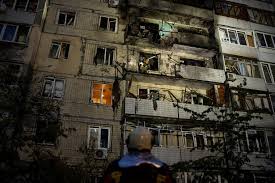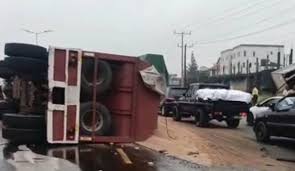At least 15 people, including a U.S. citizen, were killed and dozens more injured in a massive overnight Russian airstrike on Kyiv, described by Ukrainian President Volodymyr Zelensky as “one of the most terrible” assaults on the capital since the war began.
The barrage, which lasted nearly nine hours, targeted 27 locations across the city, including critical infrastructure and a nursery, according to Ukraine’s Interior Ministry.
One of the most harrowing moments of the attack was captured on video, showing a kamikaze drone slamming into the upper floors of a multi-storey residential building in the early hours of Tuesday, June 17. The explosion erupted into a fireball as many residents were likely still asleep.
President Zelensky said civilians were still being pulled from the rubble as of Tuesday morning. “People are currently trying to get out of the rubble of an ordinary residential building. It is not clear how many there are,” he said.
Kyiv Mayor Vitali Klitschko reported that more than 100 people sought medical treatment, with 68 hospitalized. He posted a video on Telegram from the scene, holding what appeared to be a cluster munition used in the attack.
Zelensky stated that Russia had launched a total of 440 drones and 32 missiles during the operation, making it one of the most intense airstrikes on the capital to date.
In the city’s Solomianskyi district, a Russian Shahed drone strike tore a massive hole in a residential tower, leaving behind mangled concrete, shattered glass, and splintered wood. “There is no exact information yet about those still buried,” Klitschko said. “Rescuers are working on the ground.”
Among the fatalities was a 62-year-old American citizen, whose identity has not yet been disclosed, the mayor confirmed.
Meanwhile, reports emerged that the Trump administration had previously dismantled a U.S. inter-agency working group that was set up to develop strategies to pressure Russia into accelerating peace negotiations with Ukraine. According to Reuters, the group, established earlier in the spring, was abandoned after participants realized that former President Donald Trump had little interest in adopting a more confrontational approach toward Moscow.




